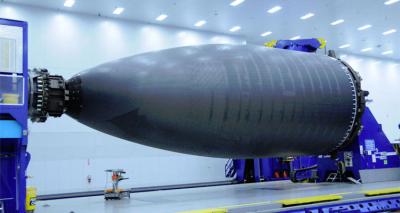Spirit AeroSystems Inc. is installing one of the world’s largest autoclaves at its Wichita, Kan., facility. The new autoclave is 120 feet long, has a 30-foot diameter and an internal volume of more than 78,000 cubic feet.
The autoclave, which is one of nearly 40 at Spirit’s Wichita location, in part of a 94,000 square-foot expansion to Spirit’s Composite Fuselage Facility, where the company makes the carbon-fiber nose section for Boeing’s 787 Dreamliner. As one of the largest manufacturers in the world, and Wichita’s largest employer, Spirit has composite expertise for large, complex aerostructures as well as jet engine nacelles.
“Spirit continues to invest in our composite manufacturing capability and this latest expansion will help us meet record demand for the products we build,” said Terry George, Spirit’s vice president of the 787 program. “Spirit’s capabilities in composites are unmatched, and we are looking forward to continuing to meet our customer’s composite manufacturing needs.”
The autoclave won’t be the only huge machine in that facility. Spirit also has a four-story-high “Electroimpact” automated fiber placement machine that creates the Dreamliner’s airplane’s cockpit and forward cabin section by laying strips of carbon fiber on tooling in the shape of the Dreamliner’s fuselage section.
Spirit has also been busy with production of parts for the Boeing 737. According to a recent article on Kansas.com, by early 2017 the company will be manufacturing 47 parts of the Boeing 737 per month – the highest rate since the company was founded 11 years ago. The article adds that Boeing’s unfilled orders for the 737 — including its current Next Generation and new Max variants — stand at 4,385. At 47 airplanes a month, that figures to nearly eight years of building 737s.
Source: Composites Manufacturing July 18, 2016

